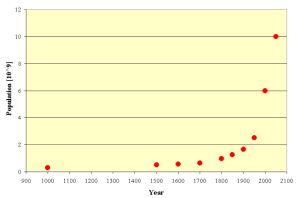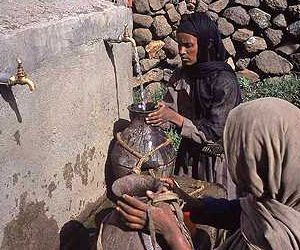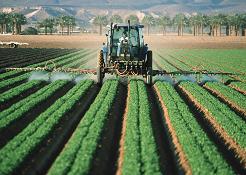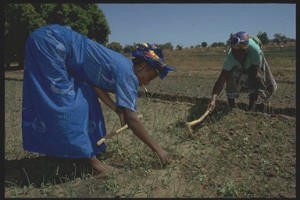 > English > Climate in brief > - Food & Climate
> English > Climate in brief > - Food & Climate
rice - wheat - beans - manioc - food for more and more people
|
|
Population growth and social imbalanceSince more than 8000 years humans are settling in villages or towns and cultivate their fields. During the last 500 years however the population on Earth really exploded. It is estimated that in 1500 about 0.5 billion people lived on our planet. In 1930 it was 2 billion, in 2000 it was around 6 billion and after the year 2050 we expect the population to peak with about 9-10 billion inhabitants. Not only the demand of energy dramatically increased, but also the demand of food.
|
Generally our planet could still feed so many people and nobody would need to suffer from hunger, if fair trading and the known production methods would be used in an optimised way. However, in reality at some places people water the lawn of their golf courses in desert regions, while in other regions people stand for hours in a queue at the village well, in order to get a few litres in a bucket to cook their poor meals. Certainly in some parts of the world there are climatic conditions discriminating agronomy. But the main reasons for the imbalance are on the one hand economic systems favouring the rich and increasing their wealth, on the other hand political instability or mismanagement and war situations in many poor countries. |
|
|
Although the rich countries would have in many cases the technical means and the power to change this situation, it is usually not the interest of the privileged to give up personal advantages in order to promote the development of the unprivileged.
|
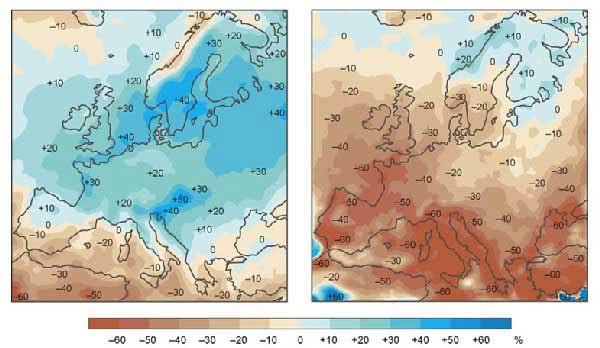 |
|
3. The map shows, how precipitation over Europe may change during the next century. In many regions the winter (image on the left) will become wetter and the summer (image on the right) will become dryer. The image is the result of a model and therefore has some uncertainty.
|
Never change a running system ...In nearly all parts of the world farmers adopted to certain climate conditions. Changes mean always new investments. Climate change will lead to a situation in which the average conditions for farming on a global scale worsen. Although higher temperatures and an increasing carbon dioxide levels need not necessarily be an disadvantage for farming, the predicted increase of extreme weather events (storms, floods and droughts) is a problem. And while some regions will benefit from higher temperatures, in particular those with so far very short growing periods, others will clearly suffer from it. In Europe for example the northern regions in Scandinavia and Russia could benefit if not beleaguered by floods, while the Mediterranean countries will probably suffer even more from droughts.
|
Advantages and disadvantages of climate changeReasons for positive effects are:
Reasons for negative impacts are:
|
|
Adaptation winsEvery change favours those who are less specialised and adopt quickly. Viruses and bacteria with their short life cycles can easily adopt. A forest however, will need decades to move a few kilometres more to the north. Moving habitats of species means for farmers that they have to change their farming methods and they have probably to cope with new diseases, weeds and pests. Not only the species, also the farmer are in a better situation if they can adopt quickly . Those, who have the best technical means, the respective knowledge and the financial resources to test new methods will suffer not that much.
|
Those, who have no access to irrigation, work in the traditional way since generations on small land pieces and sell just enough to survive and to buy the seed for the next year, could face starvation or have to give up farming if not supported by others. Successful agronomy will become even more a question of flexibility, good management, technical equipment and adaptation following early warning system. The poor will suffer more again than the rich. If not countermeasures are taken the increasing social imbalance could easily become a threat for peace in the world.
|
|
|
You will find concrete examples and further information on agronomy, food supply and the potential impact of climate change in the topic FOOD & CLIMATE of the encyclopaedia.
English proof reading: Sally Taylor, University of Leeds last published: 2005-06-14 |


